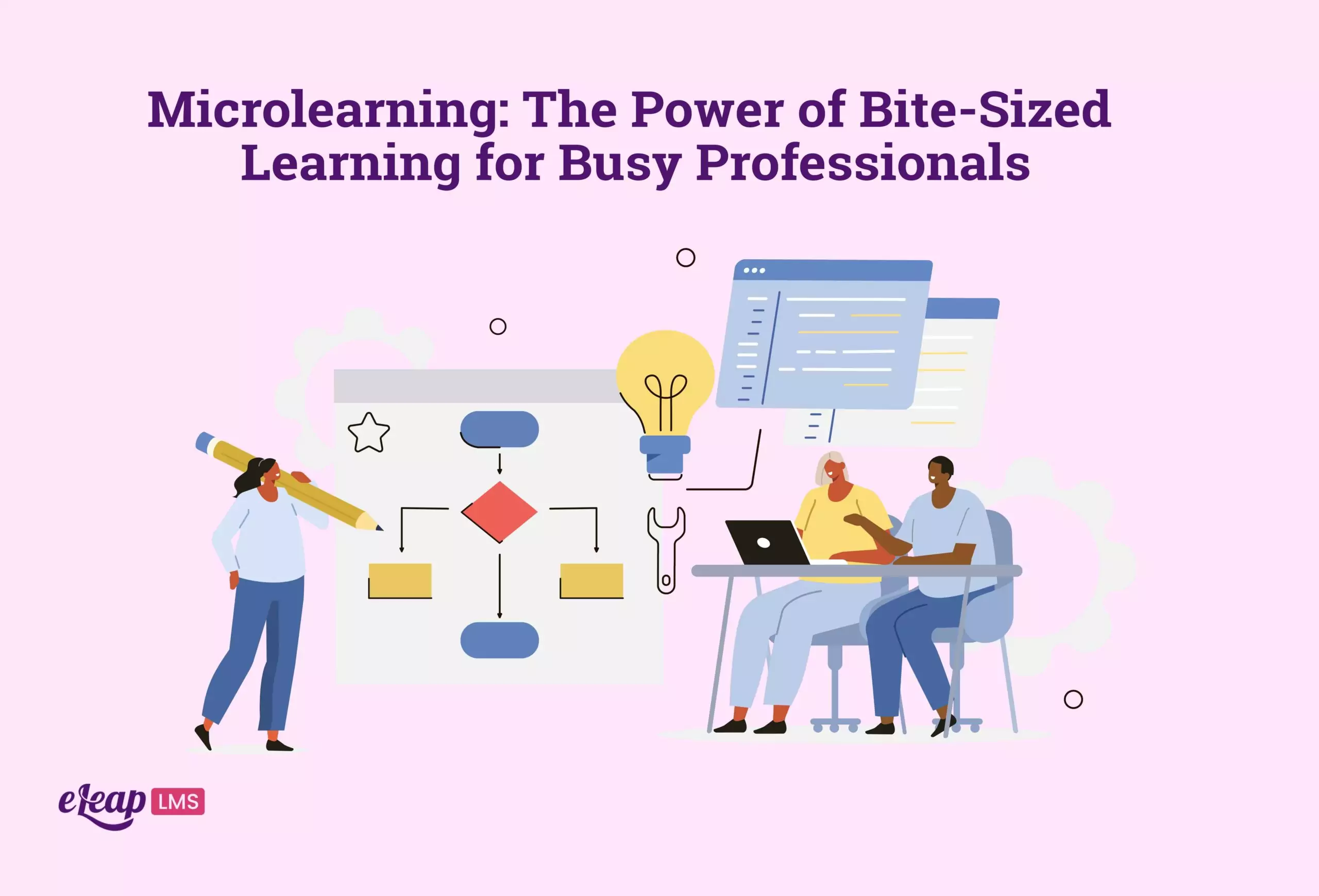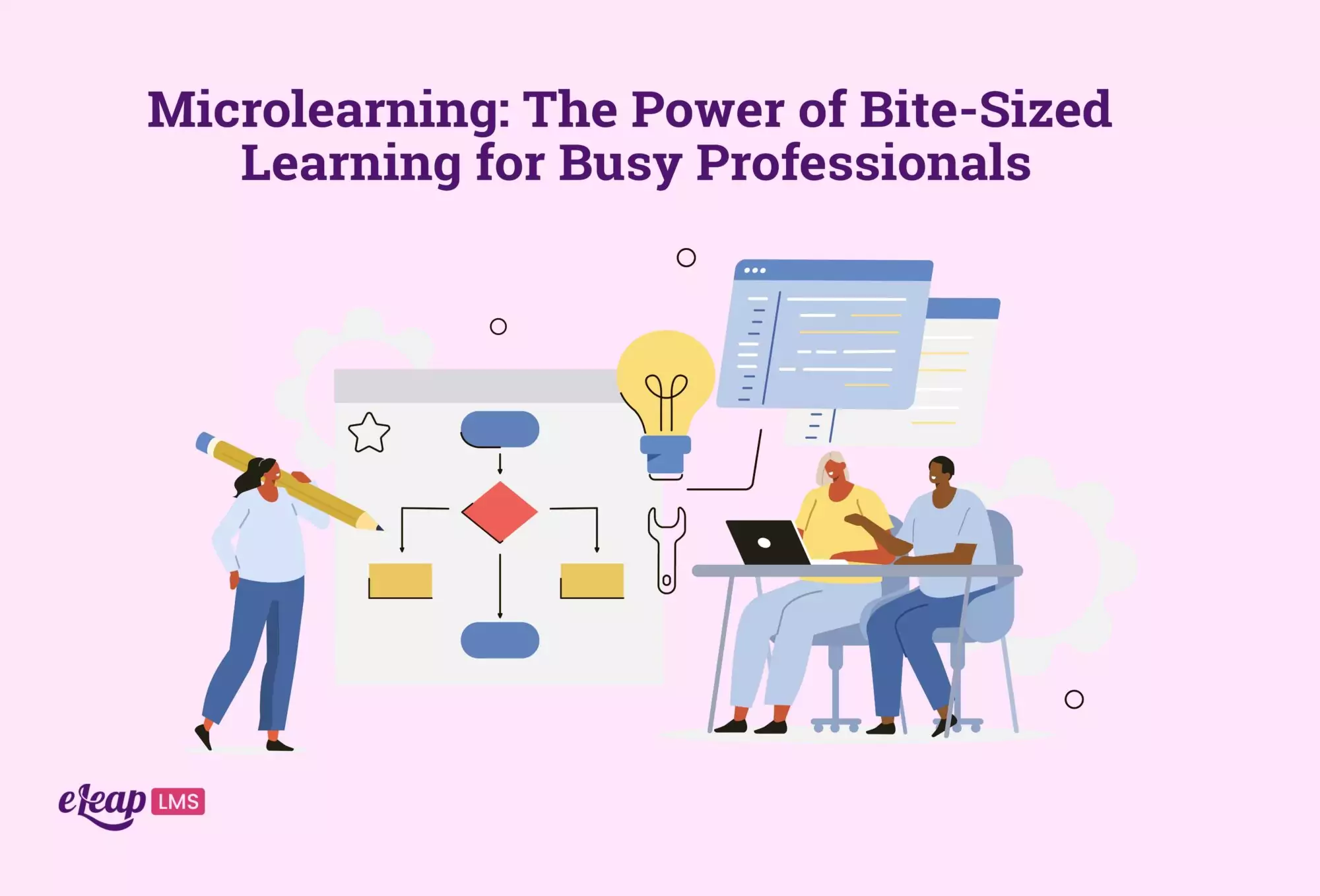Microlearning: The Power of Bite-Sized Learning for Busy Professionals

Imagine a world where business executives, managers, and other professionals could acquire new skills, master industry trends, and embrace innovative strategies without interrupting their busy schedules. A world where learning isn’t a cumbersome process but a seamless part of everyday life. This isn’t a hypothetical future; it’s the reality made possible today by microlearning.
Microlearning is transforming the professional development landscape, bridging the gap between the need for continuous learning and the time constraints that today’s professionals face. This blog will delve into the concept of microlearning, explore its benefits for busy professionals, and provide actionable tips on how to effectively implement it in your organization or personal career development strategy.

What is Microlearning?
Microlearning is a unique approach to skill-building that breaks down complex ideas into smaller, manageable learning units. These units, often called ‘learning nuggets’, typically last between 3 to 5 minutes and concentrate on a single learning objective. It’s like snacking on knowledge, delivering potent, focused insights that can be quickly consumed and applied.
How Microlearning Benefits Busy Professionals
1. Time-Efficient
Busy professionals often find it challenging to carve out large blocks of time for continuous learning. Traditional learning methods can be time-consuming and require a significant commitment. However, microlearning modules, with their compact and focused nature, can be completed during short breaks, in-between meetings, or even during a daily commute. It’s all about transforming those seemingly ‘wasted’ moments into productive learning opportunities.
2. Higher Retention Rates
Research has consistently demonstrated that our brains are more capable of retaining information when it’s presented in small, digestible segments. According to ResearchGate, short content may increase information retention by 20%. Microlearning leverages this cognitive science, leading to higher retention rates and, ultimately, more effective learning outcomes. An article by the Harvard Business Review also supports this claim. According to HBR, Segmenting training material into compact units that can be integrated into various activities elevates the learning experience and bolsters information retention.
3. Just-in-Time Learning
In the modern workplace, the need for knowledge can often be immediate and specific. A professional might need to understand a new regulation, software update, or strategy at a moment’s notice. Microlearning supports this just-in-time learning approach, allowing learners to access specific modules when needed, leading to immediate value and application.
4. Learner Engagement
The digital age has transformed how we consume information. Our attention spans are shorter, and the risk of information overload is higher than ever before. Microlearning addresses this by providing concise, engaging content that holds the learner’s attention and makes the learning experience enjoyable and impactful.
5. Flexibility
One of the hallmarks of microlearning is its flexibility. Whether you’re on a desktop at work, a tablet at a café, or a smartphone during your commute, microlearning can be accessed and engaged with. This anywhere, anytime learning capability allows professionals to seamlessly integrate learning into their schedules, making continuous professional development a reality.
Implementing Microlearning: Tips for Success
Understanding the benefits of microlearning is just the first step. To truly harness its power, here are some strategies for successful implementation:
Align with Learning Objectives:
Every piece of microlearning content should align with the overall learning objectives of the organization. This means each module should focus on one specific skill or concept. This allows learners to track their progress easily and ensures each nugget of knowledge has maximum impact.
Use Varied Formats and Embrace the Power of Animation:
In the realm of microlearning, diversity is key. Not all learning nuggets need to be the same or should be. To keep the learning experience vibrant and engaging, it’s crucial to mix up your content delivery. This can mean using videos, infographics, interactive quizzes, and more. This approach not only maintains interest but also caters to various learning styles and preferences, thereby increasing the overall effectiveness of the microlearning initiative.
Among the many formats available, animation stands out as a potent tool. A recent study published in ScienceDaily revealed that our brains are built to absorb about 80% of all the sensory data received from the environment.
Organizations that recognize this potential, produce high-quality, engaging animated videos to train their busy professionals. These videos, with their relatable characters, environments, and situations, do more than deliver information. They tell stories, creating memorable narratives that help learners remember concepts and details that might otherwise be forgotten.
Leverage Gamification:
Gamification—using game mechanics in non-game contexts—can significantly enhance microlearning. Elements such as leaderboards, badges, and rewards can boost motivation, engagement, and knowledge retention. By making learning fun, gamification encourages continuous engagement with the microlearning platform.
Integrate Social Learning:
Humans are social creatures, and our learning is inherently social as well. Integrating elements of social learning—such as discussion forums, peer feedback, or collaborative projects—into your microlearning approach can encourage a deeper understanding of the content. Social learning fosters community, promotes peer-to-peer learning, and creates an environment of shared knowledge and growth.
Enable Self-Paced Learning:
One of the benefits of microlearning is its adaptability to individual learning styles. By enabling learners to progress at their own pace, you reduce the pressure often associated with traditional learning methods. Learners can revisit modules if they need a refresher, take their time to understand complex concepts and accelerate their learning when they feel comfortable. This autonomy and flexibility make the learning experience more personalized and effective.
Conclusion
In a world that never sleeps, where innovation is relentless and time a precious commodity, it’s clear that traditional learning models are struggling to keep pace. Busy professionals need a learning solution that is as dynamic, flexible, and efficient as they are. Microlearning is that solution. By delivering knowledge in bite-sized, digestible chunks, microlearning fits seamlessly into the hustle and bustle of professional life. It turns idle moments into opportunities for growth, caters to diverse learning preferences with various engaging formats, and enhances information retention through its alignment with our cognitive processing capabilities.
More than just a trend, microlearning is a response to the realities of our modern world. It recognizes the need for lifelong learning and the challenges busy professionals face in pursuing it. Microlearning is the future of professional development, a future that promises to be more accessible, engaging, and effective than ever before.
Here at eLeaP, we have been helping organizations make that leap to utilizing learning performance solutions to advance their learning and development objectives for over 18 years. Grab a free session with our solution experts and get some valuable take-aways you can implement immediately.